In today’s developer landscape, many programmers—both new and seasoned—cling to a single coding paradigm as the “one true way,” dismissing others like object-oriented, functional, or event-driven programming as bloated or misguided. But real engineering maturity comes from knowing why each paradigm exists and when to use it. The most successful developers choose their tools based on risk, scalability, and maintainability—not ideology. This article explores why the refusal to evolve beyond one style limits growth, risks project failure, and ignores decades of hard-earned lessons in software design.
The Pirate Software Paradox: What Happens When Influence Outpaces Skill

There’s a real disconnect between the code that’s visible and the veteran status that’s claimed. This discrepancy isn’t trivial
Continue Reading “The Pirate Software Paradox: What Happens When Influence Outpaces Skill”
The Case Against 3rd Party APIs

Call me a control freak. But after decades in software development, I’ve learned to be cautious, especially when it comes to building systems on top of third-party APIs. While APIs can offer short-term acceleration, they often introduce long-term fragility that you can’t control. Why Relying on 3rd Party APIs Is Risky Using third-party APIs might
Why GAMBAS BASIC Deserves a Place in Your Development Toolbox
One of GAMBAS’s biggest advantages is its fully integrated development environment (IDE), which resembles VB6 and offers an easy-to-use graphical interface. This makes creating forms, handling events, and connecting to databases significantly faster than using more complex frameworks.
Continue Reading “Why GAMBAS BASIC Deserves a Place in Your Development Toolbox”
Developing an Open Hardware Device Programmer
Introduction As an electronics enthusiast with over 50 years of experience, I’ve had the privilege of witnessing the dramatic evolution of computing systems. From the early days of 4 and 8-bit machines with minimal RAM to today’s powerful 64-bit computers with terabytes of storage, the progress has been nothing short of extraordinary. The same transformative
Continue Reading “Developing an Open Hardware Device Programmer”
The Power of Scripting in Managing Development Servers
Discover how scripting can streamline the management of development servers. Learn about the benefits of automation and explore practical examples, including the apache-site-up.py script for managing Apache virtual hosts.
Continue Reading “The Power of Scripting in Managing Development Servers”
The Definitive Guide to RS-232 Communication: History, Standards, and Relevance in the Modern World

Introduction RS-232, often referred to as a legacy serial communication standard, has been the backbone of communication in electronics and computer systems for decades. Developed in the early 1960s, RS-232 became the standard for robust, reliable data transfer between computers, modems, and peripherals. While USB, TTL serial, and wireless protocols have supplanted RS-232 in consumer
Handling Import Conflicts in Python (Versions 3.7 to 3.13)
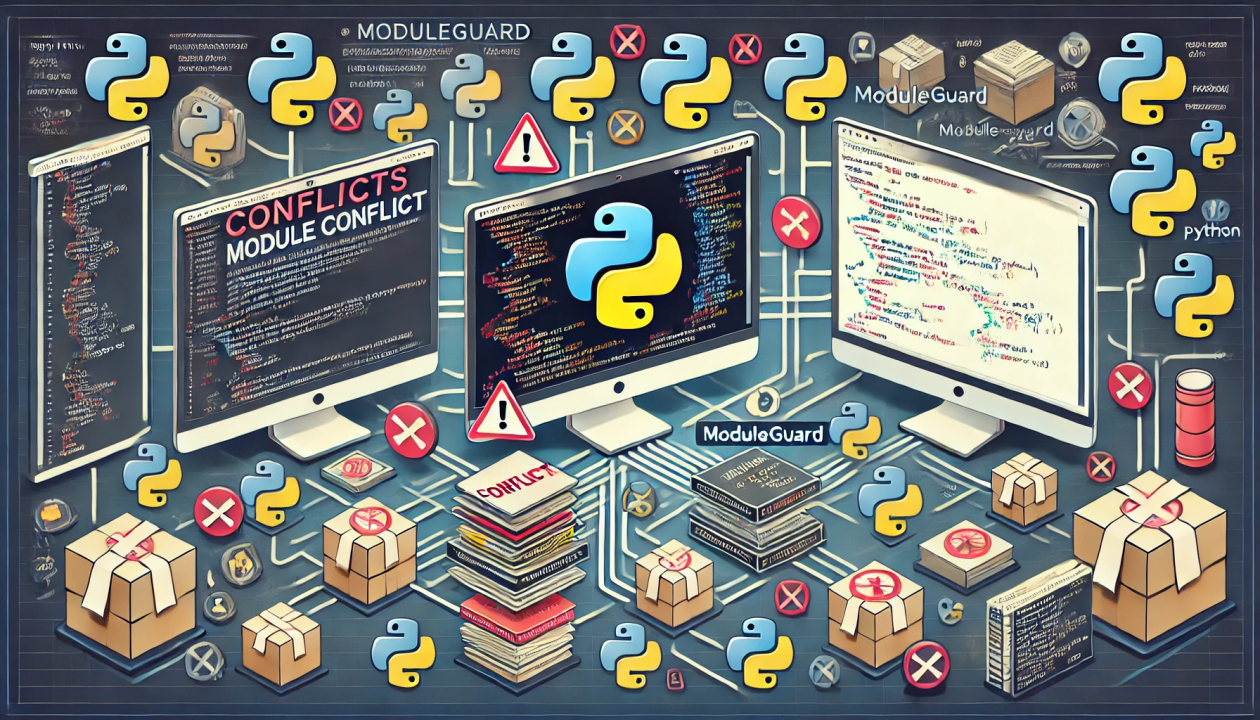
Managing import conflicts in Python is crucial for maintaining clean and efficient code. This article explores various techniques to handle import issues, from simple name conflicts to complex circular imports, covering Python versions 3.7 to 3.13. Learn how to use aliases, virtual environments, sys.path modifications, dynamic imports, and more to resolve common problems and ensure your Python projects run smoothly across different environments.
Continue Reading “Handling Import Conflicts in Python (Versions 3.7 to 3.13)”
OOP is Not What You Think It Is
OOP is Not What You Think It Is
Object-Oriented Programming (OOP) has become one of the most popular paradigms in modern software development, yet it’s often misunderstood. When most people hear “OOP,” they think of classes, inheritance, and the rigid hierarchy of objects—features that languages like C++ and Java have made standard. But this wasn’t the original vision.
The roots of OOP lie in the groundbreaking work of Alan Kay, who introduced the world to the concept in the 1970s through the creation of Smalltalk. For Kay, OOP wasn’t about objects in the way we think of them today—it was about message passing, a way for software components to communicate seamlessly without getting bogged down by the internal structure. In this vision, objects were secondary to the messages they exchanged, which encouraged flexibility, modularity, and dynamic behavior.
Smalltalk: A Different Kind of OOP
Smalltalk wasn’t just a programming language—it was a philosophy. Unlike C++ and other modern OOP languages that focus on complex class hierarchies, Smalltalk treated objects as living entities capable of sending and receiving messages. This idea of message passing was central, allowing objects to respond in ways that weren’t strictly predefined. The focus was on behavior over structure, encouraging experimentation and evolution within a system.
Smalltalk’s version of OOP was lightweight, adaptable, and far less rigid than what we see today. Alan Kay’s emphasis was on how objects collaborate rather than how they inherit from one another. This made systems designed in Smalltalk inherently more flexible, allowing for changes without the fear of breaking the underlying architecture—a stark contrast to the tightly coupled systems often seen in C++-based projects.
What Went Wrong: The Rise of Modern OOP
As languages like C++ gained popularity, the industry’s perception of OOP began to shift. Object-Oriented Programming became synonymous with class-based design, encapsulation, and inheritance. Message passing was sidelined in favor of method invocation, where functions are called directly on objects, leading to more rigid and complex systems.
The shift from Smalltalk’s dynamic message-passing model to the static class structures of C++ marked a fundamental change in how we build software. It wasn’t long before terms like polymorphism, encapsulation, and inheritance became the buzzwords of OOP, but the simplicity and elegance of Kay’s original ideas were lost in the process. Modern OOP became more about managing structure than about fostering communication between entities.
Understanding Inductors: Types, Ratings, Applications, and Selection
Inductors are essential components in electronics, used for storing energy in magnetic fields and managing current flow. This article explores the various types of inductors, their values, ratings, and applications in power supplies, RF circuits, and high-voltage systems. Learn how to select the right inductor for your project and understand key calculations like Q factor, voltage, and energy storage.
Continue Reading “Understanding Inductors: Types, Ratings, Applications, and Selection”
Capacitor Basics: An In-Depth Tutorial with Experiments
Capacitors are essential components in electronics, used for energy storage, filtering, and signal processing. This tutorial covers capacitor basics, different types, and how they function in circuits. It also includes hands-on experiments to demonstrate their properties, from charging and discharging to filtering AC signals. Learn how to measure capacitance, create filters, and even compare energy storage between standard capacitors and supercapacitors. A detailed list of materials and suppliers, including Harbor Freight for tools and multimeters, is provided to help you get started with your own experiments.
Continue Reading “Capacitor Basics: An In-Depth Tutorial with Experiments”
Capacitors: A Comprehensive Guide

Capacitors are essential components in electronics, offering a wide range of applications from energy storage to signal filtering. This article covers everything you need to know about capacitors, including types, ratings, case types, mounting options, and their use in high-frequency and high-voltage circuits. Learn how to choose the right capacitor for your specific needs, including decoupling and filter capacitors, AC line supplies, and series or parallel configurations.
Resistor Basics: A Comprehensive Tutorial with Experiments

Resistors are essential components in electronics, used to control current and voltage in a circuit. This tutorial explores the basics of resistors, including how to read resistor color codes, apply Ohm’s Law, and measure resistance with a multimeter. By completing a few simple experiments, you’ll gain practical knowledge about how resistors behave in series and parallel circuits, and how they limit current in real-world applications like LED circuits.
Continue Reading “Resistor Basics: A Comprehensive Tutorial with Experiments”
Understanding Resistors: Types, Power Ratings, High Voltage Applications, and Series & Parallel Circuits

Resistors are fundamental components in electronics, playing a crucial role in controlling current, dividing voltage, and safeguarding sensitive components. Though often simple in appearance, selecting the right resistor becomes complex when considering factors such as material, mounting, power dissipation, and performance in different circuit configurations. For high-voltage applications, additional considerations such as the resistor’s voltage
Introduction to Electronics for Hobbyists

Electronics is an exciting and rewarding hobby that allows you to build your own circuits and devices. This introduction explains the basics of electricity, including voltage, current, and resistance, and how they work together in electronic circuits. You’ll also learn about Ohm’s Law, which helps you calculate the relationship between these key concepts. Whether you’re a beginner or looking to refresh your knowledge, this guide will give you a solid foundation to explore the world of electronics.
Continue Reading “Introduction to Electronics for Hobbyists”
Setting Up a PHP Development Environment on Ubuntu 24.04
Upgrading Ubuntu 18.04 to 20.04 on a server running ISPConfig 3.x can be done safely, but requires careful preparation. In this guide, we discuss how to back up your server, verify ISPConfig compatibility, and perform the upgrade process. By following these steps, you can ensure that the upgrade is smooth and that your websites and services continue running without interruption.
Continue Reading “Setting Up a PHP Development Environment on Ubuntu 24.04”
Managing Old Kernels on Ubuntu: A Custom Kernel Removal Script
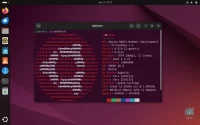
Over time, Ubuntu retains all installed kernel versions, which can consume a significant amount of space on your system. This article introduces a custom Bash script that allows users to easily remove old kernels interactively, freeing up space and updating GRUB automatically. We also discuss why Ubuntu would benefit from an integrated kernel removal mechanism that keeps only the most recent versions while allowing users to preserve older ones if needed.
Continue Reading “Managing Old Kernels on Ubuntu: A Custom Kernel Removal Script”
Understanding Unicode: A Deep Dive into Universal Text Encoding
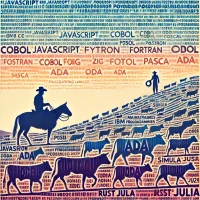
Unicode is a universal encoding standard designed to support every language and symbol in use today. This article provides an in-depth look into how Unicode works in application development, exploring the challenges of string comparison, normalization, and the multiple ways that the same visual character can be represented. Learn how to handle Unicode strings in Python, JavaScript, and C, and discover how normalization can resolve issues when comparing visually identical characters.
Continue Reading “Understanding Unicode: A Deep Dive into Universal Text Encoding”
Running Python CGI Scripts on Apache 2 with ISPConfig 3

Running Python CGI scripts on an Apache 2 server with ISPConfig 3 enables dynamic content generation using server-side scripting. This article provides a step-by-step guide to configuring Apache, enabling CGI, and running Python scripts through the cgi-bin directory, ensuring compatibility with ISPConfig’s website management.
Continue Reading “Running Python CGI Scripts on Apache 2 with ISPConfig 3”
Introduction to Code Pages: Legacy Character Encoding Systems
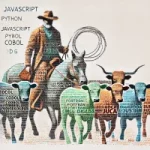
Code pages were once the backbone of character encoding in computers, providing a way to map binary values to text in different languages. However, they had significant limitations, particularly when dealing with multiple languages at once. This article explores the history of code pages, how they were used, and why they have been largely replaced by the modern Unicode standard, which offers a universal character set for all languages.
Continue Reading “Introduction to Code Pages: Legacy Character Encoding Systems”
The Need to Separate Model Aviation from Drones: A Call for Distinction
For those of us deeply invested in model aviation, the rapid rise of drones has brought new challenges that could impact the future of our beloved hobby. This article explores the need to separate model aviation from drones, using line-of-sight control and limited autonomy as guiding principles. We also discuss how flexible regulations can support both rural flyers and those at AMA fields, ensuring the hobby remains accessible to all.
Continue Reading “The Need to Separate Model Aviation from Drones: A Call for Distinction”
An Introduction to C for Arduino Users
Explore the essentials of C programming tailored for Arduino users. This comprehensive guide covers variables, data types, control structures, functions, arrays, and pointers, with practical code examples to help you harness the full potential of the Arduino platform.
Implementing Command Parsers on Arduino Over Serial
Introduction Command parsers are essential in embedded systems for receiving and interpreting commands from a host device, such as a computer or another microcontroller. In this article, we will explore how to implement command parsers on an Arduino over a serial connection, focusing on memory management, text buffer creation and use, string formatting, and handling
Continue Reading “Implementing Command Parsers on Arduino Over Serial”
Beware of Fake Chips: A Hard Lesson in Electronics
If you’ve been following my blog for a while, you know that I love tinkering with electronics. Recently, I encountered a situation that has driven home the importance of sourcing components carefully, especially when dealing with critical parts like EEPROMs. A couple of weeks ago, I decided to purchase ten AT28C64B-150PU EEPROM chips from Amazon
Continue Reading “Beware of Fake Chips: A Hard Lesson in Electronics”
Understanding Modbus, SCPI, and GPIB Protocols and Their Implementation in Embedded Systems
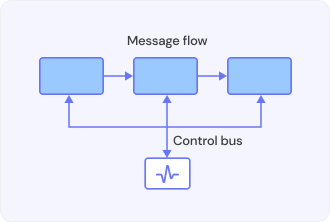
A Beginners Guide Introduction Communication protocols are vital for enabling embedded devices to interact effectively. Three prominent protocols, Modbus, Standard Commands for Programmable Instruments (SCPI), and General Purpose Interface Bus (GPIB), stand out due to their widespread adoption in various industrial and testing environments. Recently, I had the opportunity to work on an embedded project
Mastering Assembly with GCC: A Comprehensive Guide to Assembling x86-64 Code
Learn how to master assembly language programming with GCC, focusing on x86-64 architecture. Explore optimization techniques, debugging strategies, and system programming concepts to unleash the full potential of low-level system programming.
Continue Reading “Mastering Assembly with GCC: A Comprehensive Guide to Assembling x86-64 Code”
Programming Languages: Loved, Loathed, and Long-Standing
The world of programming languages is vast and ever-evolving. Over the decades, many languages have been introduced, gained popularity, and sometimes faded into obscurity. Yet, some languages, despite being widely criticized, have managed to maintain a strong foothold in the industry. Conversely, others, once heralded as the future, have declined in use. This article delves into this phenomenon, examining why some languages are resilient despite criticism, while others have fallen out of favor. We will explore these dynamics globally, understanding regional preferences and the historical context that has shaped the programming landscape.
Continue Reading “Programming Languages: Loved, Loathed, and Long-Standing”
The Productivity Paradox of AI Writing Tools: An In-Depth Analysis
The integration of artificial intelligence (AI) into writing and content creation has been heralded as a significant leap forward, promising to streamline the writing process, enhance productivity, and democratize content creation. OpenAI’s advanced models, such as GPT-4, have introduced features like “Write for Me,” which allow users to generate text on demand. However, these tools have also introduced a paradox: while they offer unprecedented capabilities, they often impede productivity due to their limitations and operational inefficiencies.
Continue Reading “The Productivity Paradox of AI Writing Tools: An In-Depth Analysis”
Building a Simple Modal Line Editor in Python: A Step-by-Step Guide
In this comprehensive tutorial, we guide you through creating a simple modal line editor in Python. Starting from basic functionality, we progressively add features like inserting lines before or after a specified line and implementing a yank command. Perfect for those looking to enhance their Python skills with practical text editing capabilities.
Continue Reading “Building a Simple Modal Line Editor in Python: A Step-by-Step Guide”
The Impact of AI on the Internet: Reshaping Blogging, Marketing, Search Engines, and More
Businesses and individuals must adapt to this new paradigm by embracing AI technology, focusing on quality and user experience, and protecting personal data. By doing so, they can harness the full potential of AI while mitigating its drawbacks, ensuring they remain competitive and relevant in an AI-driven digital landscape.
Implementing Regular Expressions (RegEx) from Scratch in Python
Implementing Regular Expressions (RegEx) from scratch in Python provides a deeper understanding of how RegEx works. This tutorial guides you step-by-step through creating a RegEx engine using finite automata, covering essential RegEx operations, converting RegEx to NFA using Thompson’s Algorithm, and building a full-featured RegEx engine.
Continue Reading “Implementing Regular Expressions (RegEx) from Scratch in Python”
Understanding Software Versioning: Semantic Versioning vs. Calendar Versioning
Versioning tools are essential for managing software versions efficiently. Popular integrated development environments (IDEs) like Visual Studio Code, IntelliJ IDEA, and PyCharm offer plugins and built-in tools to handle versioning. These tools help automate version updates, tag releases, and integrate with version control systems like Git. They simplify the process and ensure consistency, reducing the chances of human error.
Continue Reading “Understanding Software Versioning: Semantic Versioning vs. Calendar Versioning”
Understanding DNS Records for Web Servers Using ISPConfig 3
Introduction to DNS What is DNS? DNS (Domain Name System) is like the phone book of the internet. It translates human-friendly domain names like example.com into IP addresses like 192.0.2.1 that computers use to identify each other on the network. Key DNS Concepts Types of DNS Records DNS Zones A DNS zone is a segment
Continue Reading “Understanding DNS Records for Web Servers Using ISPConfig 3”
Trusting Software Security: A Comprehensive Approach
In software development, trust is not just a matter of functionality but a critical aspect of security. This article delves into the intricacies of software security, particularly in the context of Large Language Models (LLMs), emphasizing the need to trust not only the final product but also the data, models, training methods, and the checks and balances implemented within these systems.
Continue Reading “Trusting Software Security: A Comprehensive Approach”
Learning Lua Step-By-Step: (Part 24)
In this final installment of our series, we’ll delve into Lua developer best practices. These practices encompass various aspects such as code readability, documentation, adherence to standards, version control, testing, asset management, useful tools, techniques, traits of professional developers, and the Zen of Lua.
Learning Lua Step-By-Step: (Part 23)
Dive into Lua’s OS library functionalities covering date/time formatting, file path manipulation, time-based delays, and more. Explore examples demonstrating how to interact with the operating system efficiently, enhancing your Lua programming capabilities.
Learning Lua Step-By-Step: (Part 22)
Delve into Lua’s powerful math library, exploring functions for arithmetic, trigonometry, exponentiation, random number generation, and more. Learn through practical examples such as three-body simulations and planetary simulations, enhancing your Lua programming skills.
Learning Lua Step-By-Step: (Part 21)
Discover the rich functionalities offered by Lua’s standard libraries, covering error handling, file input/output, environment manipulation, metatables, iterators, serialization, and more. Explore practical examples and exercises to enhance your Lua programming skills.
Learning Lua Step-By-Step: (Part 20) Memory Management
Dive into Lua’s automatic memory management system and understand how garbage collection ensures efficient memory usage. Learn about controlling garbage collection, memory optimization techniques, and the impact on Lua objects.
Continue Reading “Learning Lua Step-By-Step: (Part 20) Memory Management”
Learning Lua Step-By-Step (Part 19)
Explore the Lua Debug Library and its powerful functions for debugging Lua code. From interactive debugging to accessing function information, learn how to leverage these tools to enhance your development workflow.
Learning Lua Step-By-Step (Part 18)
Lua metatables are a powerful feature that allows developers to customize the behavior of tables in Lua. This article explores metatables in-depth, covering their syntax, functionality, and practical applications. Learn how metatables enable operator overloading, custom indexing, and much more, making Lua programming more flexible and expressive.
Learning Lua Step-By-Step (Part 17)
In this article, we’ll delve into Love2D, a framework for game development using Lua. Love2D provides a robust set of tools and functionalities that make it a popular choice among game developers.
Learning Lua Step-By-Step (Part 16)
Dive into the world of databases with Lua! In this article, learn about relational databases and how to use SQLite with the Lua programming language. Explore creating tables, performing CRUD operations, handling transactions, and building database-driven applications. Enhance your Lua skills with this comprehensive guide to working with databases.
Learning Lua Step-By-Step (Part 15)
Dive into the world of web programming with Lua! In this series of articles, learn how to set up your development environment, create a simple multi-page web application using the Lapis framework, and enhance it with dynamic content and user authentication. Explore the possibilities of building powerful web apps with Lua.
Learning Lua Step-By-Step (Part 14)
Explore how to work with graphs and implement pathfinding algorithms in Lua. Learn about using graphs to model complex relationships and environments, and discover efficient algorithms like breadth-first search, depth-first search, Dijkstra’s algorithm, and A* pathfinding to find optimal paths.
Learning Lua Step-By-Step (Part 13)
Explore two powerful tree-based data structures in Lua: a quadtree for sorting 3D objects by depth, and a trie for efficient word searching. Learn how these data structures work and how to implement them in your own Lua projects.
Learning Lua Step-By-Step: Part 12
Explore the world of trees and graphs in Lua programming. Learn how to create, manage, and traverse binary trees and directed graphs, along with essential traversal methods like depth-first search (DFS) and breadth-first search (BFS).
Learning Lua Step-By-Step (Part 11)
Learn about error handling in Lua programming, including the use of pcall, xpcall, and assert functions. Explore practical exercises and best practices for managing errors in Lua scripts.
Learning Lua Step-By-Step (Part 10)
Learn how to implement single and double linked lists in Lua, along with search algorithms, through detailed examples and explanations.
Learning Lua Step-By-Step (Part 9): Exploring Metatables and Operator Overloading
Welcome to the ninth installment of our “Learning Lua Step-By-Step” series! In this lesson, we’ll dive deep into the world of metatables in Lua. Metatables are a powerful feature that allow you to customize the behavior of Lua tables, enabling advanced techniques such as operator overloading, object-oriented programming, and more. We’ll explore what metatables are,
Continue Reading “Learning Lua Step-By-Step (Part 9): Exploring Metatables and Operator Overloading”
Learning Lua Step-By-Step (Part 8)
Learn how to create your own Lua modules in this comprehensive guide. Explore encapsulation using closures, understand module loading, and master the art of modular programming in Lua.
Learning Lua Step-By-Step (Part 7)
Learn Object-Oriented Programming in Lua with this comprehensive guide. Explore classes, inheritance, polymorphism, and more, with plenty of example code to solidify your understanding.
Learning Lua Step-By-Step (Part 6)
Learn about the Lua os module and the Lua Posix module in this comprehensive guide. Explore file management, environment variables, time and dates, and more!
Learning Lua Step-By-Step (Part 5)
In this lesson, we’ve explored the concept of Co-Routines in Lua, understanding their importance, usage, and benefits. We’ve seen how Co-Routines can be used to manage concurrent tasks efficiently and demonstrated their usage through example code. By mastering Co-Routines, you’ll be better equipped to write scalable and efficient Lua programs.
Learning Lua Step-By-Step (Part 4)
It’s important to close a file after you’re done working with it. Leaving a file open can lead to resource leaks and other issues, especially in long-running programs. Always remember to call io.close() when you’re finished with a file.
Learning Lua Step-By-Step (Part 3)
Learn how Lua’s versatile data structures, including tables, arrays, and dictionaries, empower developers to efficiently organize and manipulate data. Explore tutorials, books, and online courses to deepen your understanding and master these essential concepts in Lua programming.
Learning Lua Step-By-Step (Part 2)
Dive deeper into the fundamental building blocks of Lua programming. Learn about variables, conditional statements, functions, and loops. Explore how to get user input and control the flow of your Lua programs.
Learning Lua Step-By=Step
Learn Lua programming from the ground up with this step-by-step tutorial. Explore the fundamentals of Lua, including data types, console output, and more. Perfect for beginners ages 10 and up.
Getting Ready to Learn Lua Step-By-Step
This article is part of the Learning Lua Step-By-Step series. It covers the basics of setting up your Lua development environment and toolchain. This includes creating a “projects” directory and installing Git, Lua, and ZeroBrane Studio IDE (Integrated Development Environment) you will use for writing your Lua programs. Note that the only required software is
Introduction to the Python xml Module: Part 2
Learn how to efficiently handle XML data in Python using the xml module. This comprehensive tutorial covers everything from creating XML files to parsing, manipulating, and managing XML data within your Python projects.
Continue Reading “Introduction to the Python xml Module: Part 2”
Introduction to the Python xml Module: Part 1
Learn how to efficiently handle XML data in Python using the xml module. This comprehensive tutorial covers everything from creating XML files to parsing, manipulating, and managing XML data within your Python projects.
Continue Reading “Introduction to the Python xml Module: Part 1”
Understanding Python Decorators: Enhancing Functionality with Elegance
Enhance your Python programming skills with the definitive guide to Python 3 decorators. Discover their definition, usage, and implementation, along with insightful examples to propel your code to new heights of functionality and elegance.
Continue Reading “Understanding Python Decorators: Enhancing Functionality with Elegance”
Words of Encouragement and Acknowledgement of Impostor Syndrome for Developers
Impostor Syndrome, as articulated by this retired engineer, offers a profound insight into the evolution of expertise within one’s field. It delineates a trajectory familiar to many: the initial surge of confidence upon completing a CS course or bootcamp, swiftly followed by the humbling experience of entering the professional sphere and encountering individuals of greater experience and wisdom.
Continue Reading “Words of Encouragement and Acknowledgement of Impostor Syndrome for Developers”
Introduction to Language-Oriented Programming
Explore the synergy between Language-Oriented Programming (LOP) and Artificial Intelligence (AI) in revolutionizing software development. Learn how domain-specific languages (DSLs) empower developers to express solutions intuitively, and discover the potential of AI in DSL design, development, and usage optimization.
Continue Reading “Introduction to Language-Oriented Programming”
Going Nostalgic With Text Adventures And QB64!
Embark on an exciting journey into the world of text adventure game development with this comprehensive guide to creating your own game in BASIC. Explore the intricacies of game design, programming techniques, and interactive storytelling as you learn to craft immersive experiences for players.
Continue Reading “Going Nostalgic With Text Adventures And QB64!”
Dynamically Adding Properties to Python Classes
In many programming scenarios, you may encounter situations where you need to dynamically add properties to classes. This can be especially useful in game development, where different game objects may require unique properties based on their specific functionality or state. In this tutorial, we will explore five methods of dynamically adding properties to classes: the crude method, monkey patching, and using decorators, Meta-Classes, and the setattr method. We will illustrate each method using a scenario of an adventure game where we have a Room class and an Item class. This allows our code to be more general.
Continue Reading “Dynamically Adding Properties to Python Classes”
Unraveling Markup Languages: A Comprehensive Guide
Explore the diverse world of markup languages, from HTML to YAML, and discover their applications in web development, data interchange, and documentation. Understand the differences between markup and programming languages, and learn when to use a custom markup language for specialized requirements.
Continue Reading “Unraveling Markup Languages: A Comprehensive Guide”
Title: What Every Software Developer Should Know About Unicode
Understanding Unicode is essential for software developers to ensure their applications can handle diverse languages, characters, and text encodings effectively.
Continue Reading “Title: What Every Software Developer Should Know About Unicode”
A Comprehensive Journey through Character Encodings: From Legacy to Modern Standards
Discover the journey of the Unicode Standard, from its humble beginnings to its pivotal role in shaping global communication. Learn how Unicode addressed the limitations of existing encoding schemes, introduced a vast repertoire of characters, and adapted to include emojis in its universal character encoding scheme.
Tree Rewriting And Shunting Yard Parsers
Introduction Last time we discussed our mission, built a lexer and tree printer to be used throughout our experiments, and introduced the Recursive decent parser. Parsing mathematical expressions involves interpreting their structure, which can be complex due to the presence of operators with different precedence levels and associativity rules. In this article series, we delve into
Handling Associativity and Precedence in Handwritten Parsers
In the context of Abstract Syntax Trees (ASTs) and parse trees, the terms “higher” and “lower” precedence, as well as tree “depth,” take on a different meaning due to the way parsers traverse the tree structure. In this context, “higher” precedence refers to nodes that are deeper in the tree, further away from the root. When parsers descend into the tree to evaluate expressions or execute algorithms, they typically start at the root and move downwards towards the leaves. Therefore, nodes that are deeper in the tree, or have a higher depth, are processed first, followed by nodes closer to the root. Conversely, nodes closer to the root have lower depth and are processed later in the parsing or evaluation process. This understanding is crucial for parsers and algorithms that rely on tree traversal to correctly interpret and evaluate expressions or perform other operations on tree structures. I have heard these terms used in reverse and for trees in general, this may be correct. I mention this because it can cause confusion, it is worth clarifying these terms when conversing with others.
Continue Reading “Handling Associativity and Precedence in Handwritten Parsers”
Exploring the Contrast: Switch Statements vs. Pattern Matching in Programming
Explore the differences between switch statements and pattern matching in programming. Learn about their syntax, capabilities, and use cases to make informed decisions in your code.
Continue Reading “Exploring the Contrast: Switch Statements vs. Pattern Matching in Programming”
Mastering Language Transitions: Techniques for Seamless Code Migration
Transitioning between programming languages is a common challenge for developers. Whether moving from Java to JavaScript, JavaScript to TypeScript, or C/C++ to Zig, mastering the nuances of each language is essential for seamless code migration. In this article, we explore techniques to overcome syntax confusion, leverage language-specific conventions, and navigate language transitions with confidence and proficiency.
Continue Reading “Mastering Language Transitions: Techniques for Seamless Code Migration”
Understanding the Differences Between Class-Based OOP and Prototype-Based OOP
In the world of software development, understanding the differences between Class-Based OOP and Prototype-Based OOP is essential. While Class-Based OOP provides structure and clarity, Prototype-Based OOP offers flexibility and dynamic behavior. Let’s delve deeper into these two programming paradigms and explore their characteristics, examples, and implications in real-world scenarios.
Continue Reading “Understanding the Differences Between Class-Based OOP and Prototype-Based OOP”
An Introduction to C–: A Dive into an Intermediate Language for Compiler and Language Research
Explore the evolution of C– – an intermediate language designed for compiler and language research. Delve into its origins, syntax, and the significance it holds in the realm of programming languages and compiler development.
DRY WET Code, Only!
Explore the delicate balance between adhering to the “Do Not Repeat Yourself” (DRY) principle and allowing a bit of code repetition in software development. Learn when to implement DRY for optimal code maintainability and efficiency, and discover scenarios where code repetition might be justified. Striking the right balance is essential for creating scalable, adaptable, and high-performing code.
Understanding Memory & Memory Management Systems: A Journey from the Past to Present
Explore the evolution of memory management in computing, from early 8 and 16-bit systems to the sophisticated mechanisms of modern virtual memory. Dive into the challenges faced by developers in systems like the IBM 5150 PC and discover a simplified demonstration of a paging system implemented in C.
BASIC: The Unsung Hero of Home Computing and Python’s Modern Echo
Discover the resurgence of the BASIC programming language and its impact on the software development landscape. From the nostalgia-driven return of retired developers to the passion of retro computing enthusiasts, this article explores the enduring legacy of BASIC and envisions new possibilities for a language that once sparked the home computer revolution.
Continue Reading “BASIC: The Unsung Hero of Home Computing and Python’s Modern Echo”
Understanding and Leveraging Structs in Python with the struct Module
Unlock the potential of structs in Python and C through our detailed tutorial. Delve into the world of composite data types, understand their applications, and master the art of struct usage in both Python and C programming. Elevate your coding expertise with this insightful guide.
Continue Reading “Understanding and Leveraging Structs in Python with the struct Module”
Understanding IEEE 754 Double Precision Floating Point Values By Implementing it in Python
Discover the world of IEEE 754 Double Precision Floating Point in Python with our in-depth exploration. Dive into the Python struct module, understand the nuances of floating-point representation, and grasp the essentials of numerical computing. Gain hands-on experience with the provided Python code for IEEE 754 implementation, unraveling the complexities of sign bits, exponents, and fractions.
Development of Multilingual LeetSpeak Encoder/Decoder App
Unlock the world of creative text manipulation with the Multilingual LeetSpeak Encoder/Decoder. This open-source Python script empowers you to encode and decode text using LeetSpeak conventions in multiple languages. Enhance your language skills, explore the GitHub repository, and join a vibrant community of text enthusiasts. Transform text in a playful and stylized manner, embracing the fun side of programming and linguistic creativity. Dive into the LeetSpeak experience and elevate your understanding of language manipulation with this versatile and customizable tool.
Continue Reading “Development of Multilingual LeetSpeak Encoder/Decoder App”
Unveiling the Power of Flowcharts in Structured And O.O.P. Programming
Explore the dynamic intersection of structured programming, UML, and the timeless utility of flowcharts. From the historical roots shaped by Grace Hopper to the practical integration of flowcharts in Python 3.x, this article navigates the evolution, purpose, and diverse applications of this visual language in software development.
Continue Reading “Unveiling the Power of Flowcharts in Structured And O.O.P. Programming”
Understanding “==” and “is” in Python 3.x: A Comprehensive Guide
Unlock the secrets of Python’s equality operators! Dive deep into the nuances of “==” and “is” in Python 3.x, exploring their history, implementation, and when to use each for effective coding. Learn about common errors, avoid pitfalls, and discover the best practices for comparing values and object identity.
Continue Reading “Understanding “==” and “is” in Python 3.x: A Comprehensive Guide”
The Pinnacle Trait of Software Developers, Engineers, Explorers, and Scientists
Explore the exciting world of web development and discover the key skills and techniques that will propel your programming journey forward.
Continue Reading “The Pinnacle Trait of Software Developers, Engineers, Explorers, and Scientists”
More BASICs And Personalizing Spells with User Input
Embark on a whimsical journey as young wizards dive into the enchanting world of QB64 programming. Unravel the secrets of magical loops, where spells repeat and mystical programs come to life. Join us on this captivating adventure into the realm of coding spells for the next generation of sorcerers!
Continue Reading “More BASICs And Personalizing Spells with User Input”
An Adventure in Coding with QB64: A Beginner’s Guide for Young Minds
Embark on a magical coding journey with QB64, a modern version of BASIC designed for young minds. Learn the basics of programming, create personalized spells, explore data types, and engage in enchanting exercises. Let your creativity soar as you master the art of coding!
Continue Reading “An Adventure in Coding with QB64: A Beginner’s Guide for Young Minds”
The Inalienable Right to Knowledge: Fostering a Shared Intellectual Commons
Explore the importance of recognizing knowledge as an inalienable right and the benefits of fostering a society that shares information freely. This article delves into the challenges posed by current copyright and patent systems and proposes changes to strike a balance between investor rights and the broader societal need for accessible knowledge.
Continue Reading “The Inalienable Right to Knowledge: Fostering a Shared Intellectual Commons”
Exploring Global Educational Systems: A Comparative Analysis and Impact on Students and Society
Transformative education, informed by global perspectives and technological advancements, has the power to reshape societies and economies. From the inclusive ideals of the Finnish educational model to the integration of artificial intelligence, this exploration envisions a future where learning is a lifelong journey, accessible to all.
Navigating Entropy in Software Development and its Implications for AI and AGI Projects
Explore the impact of entropy on software development and its consequences for AI and AGI projects. Learn effective methods to combat entropy, ensuring the longevity and performance of your software and artificial intelligence systems.
Navigating the Impact of AI on Society: Embracing Change with Caution
Explore the profound changes AI brings to software development, delve into the concept of using AI as an operating system, and examine the challenges and opportunities it presents for society. From the efficiency paradox to economic disruption, discover the far-reaching consequences of AI on jobs, industries, and the widening economic gap. Join us on a journey to understand the evolving role of software developers in an AI-driven future and how society can prepare for the transformative era ahead.
Continue Reading “Navigating the Impact of AI on Society: Embracing Change with Caution”
Understanding Class and Instance Attributes in Python: A Comprehensive Guide
I recently read a post where the author recounted an interview experience where the interviewer questioned his use of a class attribute. The interviewer didn’t believe that an attribute defined at the class level was valid Python syntax. The poster, confident in the validity of the syntax, admitted that he misunderstood what the code he
Continue Reading “Understanding Class and Instance Attributes in Python: A Comprehensive Guide”
🚀 Exciting News: Introducing “Coding For Kids” – A New Series on CodeRancher! 🚀
:
🚀 Introducing “Coding For Kids” – A New Series on CodeRancher! 🚀 Dive into the world of coding with our exciting new series designed for young tech enthusiasts aged 7 to 12. Experience hands-on, story-driven coding adventures that make learning computer science fun and engaging. Stay tuned for interactive puzzles, real-world applications, and the joy of unleashing creativity through coding! Let the coding adventures begin! 🚀
Continue Reading “🚀 Exciting News: Introducing “Coding For Kids” – A New Series on CodeRancher! 🚀”
Function Pipelines in Python: Streamlining Data Processing
Explore the power of function pipelining in Python programming. Learn how to create efficient data processing pipelines using functional programming techniques. Enhance your Python skills with our comprehensive tutorials.
Continue Reading “Function Pipelines in Python: Streamlining Data Processing”
Is Software Development An Engineering Discipline, Science, or Craft? We Ask ChatGPT!
Discover the intricate balance between theory and practice in software development. This analysis explores the intersection of software development with science, engineering, and trade craft disciplines. Gain insights into the empirical nature, problem-solving approaches, and tools used in this hybrid discipline.
Navigating Complexity in Software Systems: Measurement, Control, and Simplification
Balancing design patterns with performance requirements demands a nuanced approach from software developers. While design patterns enhance code readability, modularity, and maintainability, their impact on performance must be carefully evaluated and managed…
The Evolution and Application of Taguchi Arrays in Experimental Design
Discover how Taguchi Arrays revolutionize experimental design, optimizing the number of trials and preserving resources. Dive into the history, significance, and practical implementation of Taguchi Arrays in A/B testing and scientific experiments. Explore a Python program, taguchi_gen.py, that generates Taguchi Arrays and learn how to harness this powerful tool for efficient experimentation.
Continue Reading “The Evolution and Application of Taguchi Arrays in Experimental Design”
Retro Gaming Renaissance: Developing Games for Classic and Small Single-Board Computer Systems
Explore the unique world of retro game development on classic systems and small SBCs. Learn about the challenges
Building Robust Systems: The Properties of Fault-Tolerant Applications
Building robust, fault-tolerant applications is crucial in today’s fast-paced digital landscape. This comprehensive article explores the essential properties of fault-tolerant applications, including isolation, concurrency, failure detection, live code upgrade, stable storage, and more. Learn about techniques used in critical environments like aerospace, and discover how organizations like NASA handle fault tolerance and remote code upgrades.
Continue Reading “Building Robust Systems: The Properties of Fault-Tolerant Applications”
Understanding the Chord Algorithm: Implementation, Uses, Strengths, and Weaknesses
Dive into the world of distributed systems with our comprehensive guide on the Chord algorithm. Understand its applications, advantages, and limitations. Explore a Python implementation, gaining hands-on insights into this powerful distributed hash table protocol.
Modern C Programming: Embracing New Features, Standards, and Historical Changes
Delve into the evolution of C programming, from historical changes to embracing new features like C11. Explore its enduring usefulness in modern software development and understand its impact on programming languages and the fast-paced world of technology.
Continue Reading “Modern C Programming: Embracing New Features, Standards, and Historical Changes”
Exploring HTMX and Building Custom Attribute Handlers
Explore the world of web development with HTMX and custom attribute handlers. Learn how to enhance your web applications’ interactivity and simplify complex tasks using lightweight JavaScript libraries. Dive into the fundamentals of HTMX, REST, and the Custom Elements API, and discover how to create custom attribute handlers from scratch.
Continue Reading “Exploring HTMX and Building Custom Attribute Handlers”
The Complexity, Costs, and Commitment in Software Development: A Comprehensive Exploration
For businesses that demand a sophisticated, unique application tailored precisely to their requirements, investing in quality is non-negotiable…
Rebuttal to Eric Normand’s Article: “How is Haskell Faster than C?”
Delve into the nuanced debate between Haskell and C programming languages. This article dissects the claims about Haskell’s speed superiority over C, emphasizing the importance of well-crafted code and developer expertise in determining programming efficiency. Discover the complex interplay of factors that influence the performance of these languages in real-world applications.
Continue Reading “Rebuttal to Eric Normand’s Article: “How is Haskell Faster than C?””
The AI Inequality Has Already Begun: A Prelude to Societal Shifts
Explore the far-reaching implications of AI inequality and its roots in economic disparities. Learn about the challenges posed by job displacement and the strain on social safety nets. Discover the urgency of proactive, no-cost re-education programs and the need for collective action in bridging the digital divide.
Continue Reading “The AI Inequality Has Already Begun: A Prelude to Societal Shifts”
Leveraging AI for the Complete Software Development Cycle as a Lone Developer
Discover the transformative power of Artificial Intelligence (AI) for lone developers in the realm of software development. Explore how AI can boost efficiency, enhance productivity, and elevate code quality from idea generation to deployment. Learn the art of AI prompt engineering and harness tools like GPT-3, CodePilot, and MetaGPT to supercharge your solo software development journey. Uncover the strengths and limitations of AI in this dynamic field and embark on a path to become a master of AI-driven development.
Continue Reading “Leveraging AI for the Complete Software Development Cycle as a Lone Developer”
Navigating the AI Revolution in Software Development and IT: A Career Guide
Discover how artificial intelligence (AI) is reshaping the landscape of software development and IT. Learn how to prepare for the AI revolution, adapt your skills, and explore new career opportunities. Explore the impact of AI on coding, testing, security, and data management. Stay ahead in the evolving world of technology by embracing AI as a powerful tool, not a threat to your career.
Continue Reading “Navigating the AI Revolution in Software Development and IT: A Career Guide”
The Role of AI in Software Development: Benefits, Drawbacks, and Ethical Considerations
Discover the transformative impact of Artificial Intelligence (AI) in software development. Explore the reasons developers are integrating AI into their workflows, its benefits, and drawbacks. Learn about the accuracy of AI in code generation, testing, and documentation. Delve into real-world examples with OpenAI’s ChatGPT and CodePilot. Uncover the ethical considerations, job displacement concerns, and privacy issues. Plus, explore how AI is applied in critical software systems and where developers should exercise caution. Harness the power of AI while preserving the essence of human expertise in the ever-evolving world of software development.
Crafting Comprehensive Project Documentation for Open-Source and Self-Published Projects
Effective project documentation serves as the cornerstone of success for both open-source and self-published software projects. From the user-friendly README.md to the comprehensive developer manual and contributor guidelines, each document plays a vital role in building strong relationships with users, contributors, and the wider community.
In this comprehensive guide, we explore the various types of project documentation and their essential roles. We’ll delve into why documentation matters, how it enhances user experiences, and why it’s crucial for building trust and fostering growth. Whether you’re embarking on an open-source venture or self-publishing a project, you’ll discover how impeccable documentation can be your project’s secret weapon.
Join us as we uncover the art of crafting exceptional documentation that not only informs but also inspires, creating a lasting connection between your project and its audience. Happy documenting!”
This excerpt provides a concise overview of the article’s focus on project documentation, its importance, and its role in building relationships with users and contributors. It also invites readers to explore the comprehensive guide for more insights.
Mastering Git: A Comprehensive Guide to Effective Version Control in Different Workflows and Team Sizes
Discover the power of Git for efficient version control in diverse workflows, from solo developers to large teams. Explore branching strategies and seamless CI/CD integration, optimizing your software development process.
CI/CD: Streamlining Software Development and Deployment
Discover how Continuous Integration and Continuous Deployment (CI/CD) are revolutionizing software development by streamlining processes, enhancing speed, and ensuring quality. Explore the strengths and weaknesses of CI/CD, learn how to implement it into your current delivery process, and compare it to traditional delivery methods. Plus, follow a step-by-step guide to building a ‘Hello World’ app with CI/CD, taking your software development to the next level.
Continue Reading “CI/CD: Streamlining Software Development and Deployment”
Introducing WASI
Discover the power of WASI, the game-changing technology that allows web developers to tap into the full potential of their users’ devices. Say goodbye to the limitations of traditional web development and hello to blazing fast performance, seamless interactions, and unparalleled user experiences. Learn how WASI is revolutionizing the web development landscape and why it’s set to become the new standard for building modern web applications.
Mastering WordPress Settings API: A Comprehensive Guide
WordPress is a powerful content management system that empowers millions of websites across the internet. As a WordPress developer, one of the key aspects of creating a flexible and user-friendly WordPress theme or plugin is providing a way for users to customize settings. WordPress offers a built-in mechanism known as the Settings API, which simplifies
Continue Reading “Mastering WordPress Settings API: A Comprehensive Guide”
An Introduction to PyOpenGL – OpenGL The Easy Way
Unlock the realm of graphics programming with PyOpenGL, a Python binding that brings the powerful capabilities of OpenGL to your fingertips. Dive into the evolution of OpenGL, from its history to its role in modern graphics programming. Discover how PyOpenGL simplifies complex OpenGL tasks for creating 2D and 3D graphics, as we guide you through crafting a classic 2D Snake game and dynamically generating immersive 3D terrains. Harness the potential of OpenGL the easy way, as this article introduces installation, step-by-step examples, and valuable resources for delving further into the world of interactive visualizations.
Continue Reading “An Introduction to PyOpenGL – OpenGL The Easy Way”
Kalman Filters: Theory, Applications, Implementation, and Considerations
Explore the power of Kalman filters in state estimation and sensor fusion. Understand their theoretical foundations, versatile applications in navigation, robotics, finance, and signal processing, and learn how to implement them using Python and C. Delve into their strengths, limitations, and considerations, and gain hands-on experience through practical examples. Uncover the mathematical framework behind Kalman filters and harness their potential to enhance accuracy in estimating dynamic system states amidst noise and uncertainties.
Continue Reading “Kalman Filters: Theory, Applications, Implementation, and Considerations”
Introducing Control Algorithms: An In-Depth Exploration of P, PD, PI, and PID Controllers
Delve into the world of control algorithms with our comprehensive tutorial on Proportional (P), Proportional-Derivative (PD), Proportional-Integral (PI), and Proportional-Integral-Derivative (PID) controllers. Explore the theoretical foundations, features, and limitations of each controller while gaining practical insights through Python code examples. Elevate your engineering expertise by mastering these controllers for precision, stability, and effective disturbance handling in diverse systems.
Mastering Control: A Comprehensive Guide to Proportional, PD, and PID Algorithm Implementations in C
Discover the world of control systems engineering as we delve into the intricacies of Proportional, Proportional-Derivative (PD), and Proportional-Integral-Derivative (PID) control algorithms. This comprehensive guide offers both theoretical insights and hands-on implementations in the C programming language. From the foundational Proportional control to the advanced PID control, join us on a journey through code examples and in-depth discussions on how these algorithms work, their strengths, and when to choose each for precise and stable control of various processes.
Exploring Lesser Known Features of Python: Unveiling the Hidden Gems
Explore the hidden gems of Python programming! Uncover lesser-known features such as the ‘else’ clause with loops, numeric literals with underscores, the power of context managers, and the magic of f-strings. Delve into the world of unpacking operators, mix positional and named parameters, and harness the dynamic flexibility of *args and **kwargs. Enhance your coding arsenal with these lesser-known Python features and elevate your programming prowess.
Continue Reading “Exploring Lesser Known Features of Python: Unveiling the Hidden Gems”
Essential Python Language Concepts for Entry and Mid-Level Developers
Explore essential Python language concepts in this comprehensive guide aimed at entry and mid-level developers. Delve into topics like mutability, references, copying, and concurrency, while mastering advanced techniques such as decorators and loop comprehensions. Build a strong foundation to create robust, efficient, and error-free Python code.
Continue Reading “Essential Python Language Concepts for Entry and Mid-Level Developers”
Unlocking the Hidden Value: Harnessing the Potential of Older Workers in the Tech Industry
Discover the untapped potential of older workers in the tech industry. As late-life careers become a prominent trend, seasoned professionals are redefining their trajectories. Explore how their experience, adaptability, and eagerness to learn make them invaluable assets. Learn why attracting and hiring these individuals can enhance innovation, collaboration, and long-term success. Uncover the transformative power of age-diverse workforces and the unique perspectives they bring to the dynamic world of technology.
The Debate over Removing Problematic Terms in Software: A Comprehensive Examination
“In a rapidly evolving digital landscape, the software development community finds itself at the crossroads of a significant debate—one that resonates far beyond lines of code. The discourse revolves around the removal of seemingly innocuous terms like ‘master’ and ‘slave’ from software and its documentation, sparking a profound examination of inclusivity, symbolism, and the very fabric of industry culture. As the tug-of-war between tradition and progress intensifies, this article delves into the heart of the matter, dissecting the arguments from both sides and shedding light on the human and financial dimensions at play. By navigating this nuanced terrain, readers can gain insight into the dynamic forces shaping software development’s future and engage in a crucial dialogue about the transformative power of language.”
Data Wrangling: Unveiling the Hidden Power of Data for Web and Applications
What is Data Wrangling, what do you need to know about it, and more will be discussed in this article.
Continue Reading “Data Wrangling: Unveiling the Hidden Power of Data for Web and Applications”
An Interview with ChatGPT 3.5: Exploring the Frontiers of Conversational AI
Join us on an exploration of the boundless realm of conversational AI as we peel back the layers of ChatGPT 3.5’s capabilities. Through the lens of our interview, we delve into the symbiotic relationship between human ingenuity and artificial intelligence, shedding light on a future where collaboration and innovation seamlessly intertwine.
Continue Reading “An Interview with ChatGPT 3.5: Exploring the Frontiers of Conversational AI”
Mastering Command Line Argument Parsing with Python 3’s argparse Module
Introduction: Command line interfaces (CLIs) are an essential part of many software applications, allowing users to interact with programs through a terminal or command prompt. Python provides a powerful and flexible module called argparse to handle command line arguments effortlessly. In this article, we will explore the features and functionality of argparse, step by step,
Continue Reading “Mastering Command Line Argument Parsing with Python 3’s argparse Module”
The Ongoing Debate: OOP vs. Structured Programming
A developer who possesses a broad knowledge of multiple languages, even if they specialize in one, can leverage diverse perspectives to find creative solutions.
Continue Reading “The Ongoing Debate: OOP vs. Structured Programming”
Exploring Embedded Development with the Free Pascal Compiler (FPC)
The Free Pascal Compiler (FPC) empowers developers in embedded systems by enabling efficient and flexible programming for various hardware architectures.
Continue Reading “Exploring Embedded Development with the Free Pascal Compiler (FPC)”
Learning Free Pascal
A survey conducted by Embarcadero Technologies in 2021, Delphi was ranked as the most commonly used programming language in Brazil, Argentina, and Russia.
Understanding Dynamic Domain Name Services (DDNS)
Typically, residential internet service providers assign dynamic IP addresses to their customers. These IP addresses are subject to change periodically, making it challenging to maintain a consistent connection to the home network or website.
Continue Reading “Understanding Dynamic Domain Name Services (DDNS)”
Introducing Zig
Zig is a powerful and pragmatic programming language that combines low-level control with modern features
Introduction to Compilers
Introduction: Welcome to our series on compiler development using Python! In this series of articles, we will explore the fundamentals of grammars and their role in defining the syntax of programming languages. We’ll also discuss different notation systems used to express grammars, such as BNF, EBNF, and PEG, and their relation to lexical analysis. Understanding
Site Security Update
2FA soon to be required for login!
Speeding Up Python Apps With CFFI

Calling C/C++ Code from Python Introduction Python is a powerful and versatile programming language, but one of its weaknesses is that it can be slow compared to other languages like C or C++. However, Python can use C/C++ code to speed up the application or simply make use of functionality not available in Python. By
How to Allow Users Access to Virtual Devices
A I’ve been working on a little side project that uses a PC’s audio port to read the control signals from a radio control transmitter via the PC’s audio input and use it to control a virtual joystick. I had to do a refresher on how Linux handles input devices and search for what C
Continue Reading “How to Allow Users Access to Virtual Devices”
Securing Credentials in Python Apps

Python has become a very popular language for software development. Over the decades since it was first introduced, the language has slowly grown and matured while keeping its ease of use and shallow learning curve. This has made it the go-to language for much of the AI and ML communities and many web applications have
Hardware Abstraction Layers (HAL)
I was shocked that she wasn’t familiar with HALs.
Building Machines In Code – Part 9
Tooling for the Tiny-T When we completed the console, last installment, I had said I was unsure what I would cover next. I’m really wanting to begin implementing our audio device, but I felt that adding a GUI for the Tiny-T system was a target much more achievable in the limited time I had. However,
Building Machines In Code – Part 8
Adding a Crude Console Last time, we left off with a working computer system using the Tiny-T processor. I told you that we would add a very crude terminal to the system this time. The terminal I’ll present today is barely a terminal. It won’t have any special functions, text scrolling, or any other features
Building Machines In Code – Part 7
Today’s Project NOTICE: Today’s Code will only work under Python 3.10 and later. In this episode, we will build a new system using a processor with Von Neumann Architecture. We will also be splitting our system into various files and classes to organize our system better. The Memory will no longer be part of the
Building Machines In Code – Part 6
Last issue we built a simple assembler for our TIny-P processor emulator. In this installment, we will build a loader. But what is a loader? Loaders are small programs that load other programs into system memory and prepare them for execution. Most loaders are part of an Operating System however, in the embedded world, there
Building Machines In Code – Part 5
Tooling Hardware and software developers are tool makers by trade. Just like a machinist, software developers often need to develop their own tools for the job at hand. Sometimes these tools are simple scripts to automate a boring, or complicated task, or perhaps, a tool to fill a yet unfilled niche. Whatever the reason, tool
Building Machines In Code – Part 4
Programming the Tiny-P Programmers are often confused by the terms machine language and assembly language. Many developers consider these two terms interchangeable. But in fact, they mean very different things. If you go back to the Tiny-P Opcode table presented in part-3 of this series, you can see how the various machine code values are
Building Machines In Code – Part 3
Creating the Tiny-P CPU In this post, we will finally write some code. I promise! We’ll be using Python here as one of the most popular languages these days according to the Tiobe index, narrowly beating out C. So, in the interest of reaching as many people as possible I settled on Python for this
Building Machines in Code – Part 2
So which is better? The answer to this question, like so many things in computer science is “it depends”.
Building Machines In Code
Regarding the difference between simulation and emulation:
Not limited to computers I use this distinction:
– A simulation mimics the outward appearance
– An emulation mimics the cause/process.
If you want to convince people that watching television gives you
stomach-aches, you can simulate this by holding your chest/abdomen and
moan.
Programming And Debugging Microcontrollers Using OpenOCD and Raspberry Pi
Using Raspberry Pi and OpenOCD to Program and Debug A STM32 Micro-controller
Continue Reading “Programming And Debugging Microcontrollers Using OpenOCD and Raspberry Pi”
Stepping Back in Time
Many of us have retired and are looking for something to do. Others have found themselves stuck at home and socializing much less due to the Covid outbreak. This has caused many of us to dig out our old dusty computer systems and begin re-living the magical adventures we had when the web was still the future, BBSs were the rage, real programmers used assembly, BASIC was for everyone, and nerds knew every detail of the hardware they used!
Extensible Dart Classes with Extension Methods
I was recently tasked with creating a general-purpose unit conversion class. The class needed to be easily extensible so new conversions could be easily added at any time. It also needed to throw an exception when an unsupported conversion was attempted. Furthermore, I was told that the conversion method needed to take in two string
Continue Reading “Extensible Dart Classes with Extension Methods”
Introduction to Algorithms with Dart
Once a novice developer learns the basic syntax of their programming language, and begins writing anything more than simple hello-world type apps, they start to encounter problems. At first, these problems seem daunting. To find answers, they usually start hitting the various software development forums and social sites where their kindred spirits tend to congregate
Simple Solution for Unconstrained Height and Width Errors in Flutter
The phrase “Error: Viewport was given an Unbounded Height” brings horror to the novice Flutter developer.
Continue Reading “Simple Solution for Unconstrained Height and Width Errors in Flutter”
Dart: “static”, “const”, and “final”
With the droves of developers flocking to Dart/Flutter as a cross-platform development solution, I tend to see the same questions come up again and again on Slack, Stack Overflow, and Discord as well as many other forums. One such question is What is the difference between “static”, “const”, and “final”? For the uninitiated, they can
Multi-Group Checkboxes in Flutter
I spend a lot of time on the Flutter Slack channel (thanks Scott!), and I try and help as many people as possible during my breaks from my own work. Today I was asked how to implement multiple selectable groups of checkboxes in Flutter. I offered a solution which as is often the case, was
Flutter Navigation with Confirmation
I spend a lot of time in the Flutter slack channel answering questions to help others. Sometimes I am asked a question that seems trivial at first, and then I realize I’ve been working with Flutter since 2017 and even I sometimes struggled with the simplest of tasks when I started. So, when I can,
Dart / Flutter Conditional Imports
Over the past few years, Dart and Flutter have really gained popularity. Along with the growth in popularity has come a plethora of new features added to both the Dart language and the Flutter GUI tool kit. Some of the most popular new features are support for new platforms such as web and desktops (Windows,
Design Patterns In Dart
GoF Design Patterns in Dart Back in the ’90s, a group of four authors released a book that became standard reading for any self-respecting software developer, the Gang of Four’s Design Patterns book. Along with Fred Brooks’s Mythical Man-Month, Don Knuth’s The Art of Computer Programming series, these books are still fundamental to our profession
Design Patterns In Dart – Part 2
The Singleton Pattern From time to time you’ll find you need to ensure that your code creates only a single instance of a class. This often occurs in hardware drivers or certain OS sub-systems. It’s not a feature you need often but, when you need it, you really need it! The singleton pattern is one
Dart / Flutter State Management with Okito
Recently in the slack flutter forum, the Okito package was announced. I took a quick look at the package but at the time didn’t have time to investigate it fully. This past week I got the chance to look the documentation over and produced my first ever Youtube video using Okito as the subject. In
Continue Reading “Dart / Flutter State Management with Okito”
Flutter Reaches 2.0

Compiling Legacy Dart/Flutter Code with Sound Null Safe Code Anyone who knows me knows how I feel about flutter, Googles (fairly) new cross-platform toolkit. I started working with flutter back in 2017 and it has been a lot of fun! This past week Google held a virtual event for flutter called Flutter Engage. During the
Implementing Stack Oriented Languages – Part 4
Strings and Variable So far we’ve added lots of stack operations and a couple I/O routines with the KEY and EMIT keywords. At the moment if we wanted to write a simple “Hello World” application we would need to place each character on the stack and pop them off using the EMIT keyword. This is
Continue Reading “Implementing Stack Oriented Languages – Part 4”
An Introduction to Graph Algorithms
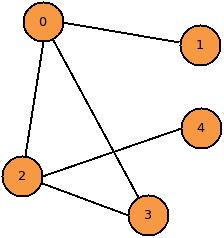
This post marks the first in a series of posts I will complete on graph algorithms. The code will be python however, I will write the code very verbosely so it will be easily ported to your favorite programming language. I will assume you have some programming skills but are still a novice or that
Implementing Stack Oriented Languages – Part 3

Before we move on to adding more features to our language, I think it is high time we combine our disparate parts into a single entity.
Continue Reading “Implementing Stack Oriented Languages – Part 3”

Recent Comments